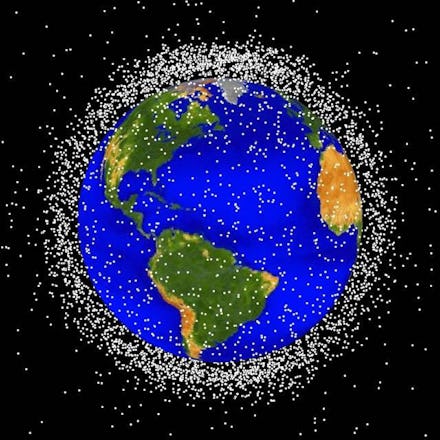4 Images Reveal How Many Potentially Dangerous Things Are Whirling Around Earth

When you look up at the night sky, typically all you can see is inky blackness and a few stars — if you're lucky.
It's not something many of us spend a lot of time thinking about, but beyond those clear skies there's a giant swarm of satellites, space debris and asteroids whizzing around Earth, enshrouding us in a spherical haze of space objects. Some of those objects could potentially crash into Earth, and depending on the size of the object and location of the crash, cause serious damage.
Now we can visualize it: The website stuffin.space (it works best in Safari and Firefox), created by programmer James Yoder, shows all the trackable satellites and chunks of space debris around Earth. Red dots show satellites, blue dots show rocket bodies and gray dots show debris:
Yeah, it's a lot. The website is also searchable, so you can find specific satellites or debris pieces.
Here's a look at how much space debris specifically is floating around Earth. Stuart Grey created the animation using data from space-track.org:
It could be a big problem: Experts say the growing amount of space debris will make it harder to launch things into space because it's getting so crowded up there. It's also possible for pieces to get sucked in toward the Earth and hit the surface.
The image below shows all the asteroids we know about that are currently tumbling around the Earth. The green dots show asteroids that are at a safe distance from Earth. The yellow dots show asteroids that come close to Earth but don't cross our orbit. The red dots show the asteroids that cross our orbit and are potentially the most dangerous.
Yikes.
This image, also from the Armagh Observatory, offers a zoomed-in perspective of all the asteroids we know about that are within 11 million kilometers of Earth.
NASA estimates there are 1,707 potentially hazardous asteroids around us right now. Luckily, NASA also has an asteroid-monitoring program that tracks asteroids and is in charge of disaster planning if one ever heads are way. Scientists are still trying to work out ways to clean up space debris.
Read more: